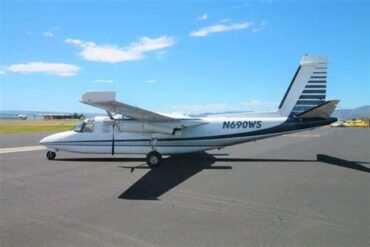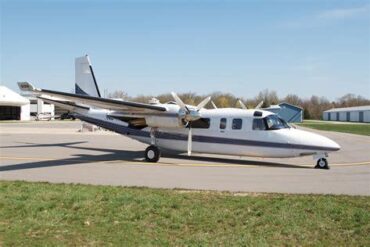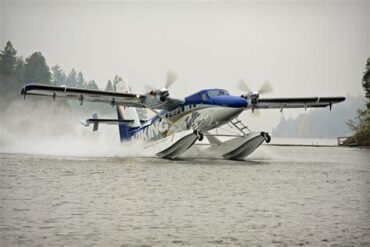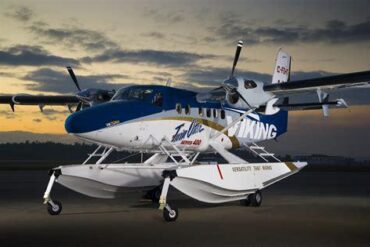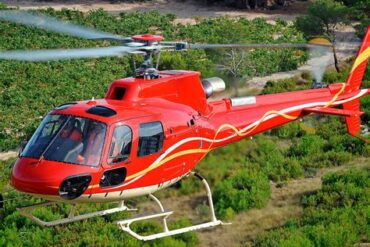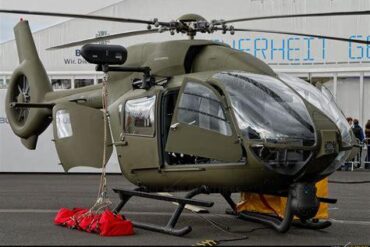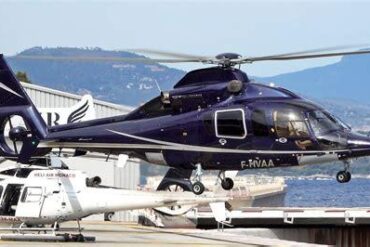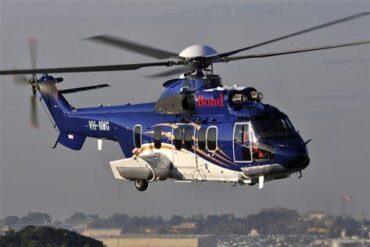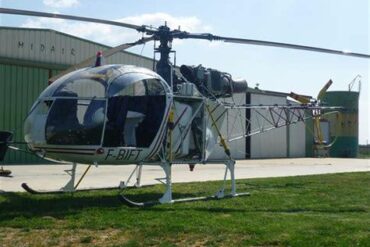The Twin Commander 690B is a remarkable aircraft that has made a name for itself in the world of business aviation. Known for its versatility, performance, and comfort, the 690B has attracted attention from both private owners and charter operators. In this article, we will delve into the price, operating costs, and the factors that influence the overall investment in this exceptional aircraft.
Understanding the Twin Commander 690B
Before exploring the costs associated with the Twin Commander 690B, it is essential to understand its key features. The 690B is a twin-engine turboprop aircraft, designed primarily for executive transport. With a seating capacity of up to eight passengers, this aircraft offers a spacious and comfortable cabin, equipped with modern amenities. The aircraft’s performance is bolstered by its powerful Pratt & Whitney PT6A-60A engines, which provide excellent range and speed, making it suitable for both short and long-haul flights.
Performance Specifications
-
Cruising Speed: Approximately 250 knots (288 mph)
-
Maximum Range: 1,700 nautical miles
-
Service Ceiling: 30,000 feet
-
Payload Capacity: Up to 3,800 pounds
These specifications contribute to the 690B’s reputation as a reliable and efficient aircraft for various missions, including business travel, cargo transport, and medical evacuation.
Price of the Twin Commander 690B
When considering the acquisition of a Twin Commander 690B, potential buyers should be aware of the purchase price. The cost can vary significantly based on several factors, including the aircraft’s age, condition, and modifications. On average, the market price for a used Twin Commander 690B ranges from $500,000 to $1.2 million.
Factors Influencing Price
-
Age of the Aircraft: Older models typically have a lower market value. However, they may require more maintenance and upgrades, which can impact the total investment.
-
Airframe and Engine Hours: The number of hours logged can affect resale value. Aircraft with lower airframe and engine hours are often priced higher due to their remaining service life.
-
Maintenance History: A well-documented maintenance history can add value to the aircraft. Buyers tend to favor planes that have been meticulously maintained and inspected.
-
Modifications and Upgrades: Any enhancements or upgrades—such as avionics upgrades, interior refurbishments, or performance enhancements—can significantly affect the price.
-
Market Demand: As with any market, supply and demand play a crucial role in determining prices. High demand for specific models can drive prices up, while oversupply can lead to lower prices.
Operating Costs of the Twin Commander 690B
Owning an aircraft involves more than just the initial purchase price; understanding the operating costs is vital for prospective buyers. The operating costs for the Twin Commander 690B can be broken down into several categories:
1. Fuel Costs
Fuel is one of the most significant ongoing expenses for any aircraft owner. The Twin Commander 690B has a fuel burn rate of approximately 40-50 gallons per hour, depending on the flight profile and operating conditions. Assuming an average fuel price of $5.00 per gallon, fuel costs can range from $200 to $250 per hour. For an average flight of three hours, this translates to $600 to $750 in fuel expenses.
2. Maintenance Costs
Routine maintenance is crucial for ensuring the longevity and safety of the Twin Commander 690B. Annual maintenance costs can vary widely but typically range from $20,000 to $50,000. These costs include:
-
Scheduled inspections: Regular inspections are mandated by aviation authorities to ensure compliance with safety standards.
-
Parts replacement: Over time, components such as tires, brakes, and filters will need replacement.
-
Labor costs: Professional services for maintenance and repairs can add up significantly.
3. Insurance Costs
Aircraft insurance is another important consideration. The cost of insuring a Twin Commander 690B can vary based on factors such as pilot experience, usage, and coverage levels. On average, owners can expect to pay between $10,000 and $20,000 annually for insurance.
4. Hangar and Parking Fees
Storing the Twin Commander 690B requires a hangar or parking space, which incurs additional costs. Depending on the airport and location, hangar fees can range from $1,000 to $3,000 per month. Annual costs may therefore amount to $12,000 to $36,000.
5. Crew Salaries
If the aircraft is operated commercially or by a company, hiring qualified pilots and crew members is necessary. Salaries for pilots can vary significantly based on experience and location, but typical annual salaries range from $70,000 to $120,000 for qualified pilots. For a two-pilot crew, this could mean an annual salary expense of $140,000 to $240,000.
6. Miscellaneous Costs
Additional costs can include:
-
Landing fees: Charges applied when landing at airports.
-
Navigation fees: Costs associated with using air traffic control services.
-
Training: Ongoing training for pilots and crew members to maintain certifications and skills.
Total Annual Operating Costs
When consolidating all these costs, the total annual operating expenses for the Twin Commander 690B can be estimated between $300,000 and $600,000, depending on usage and individual circumstances. This estimate includes:
-
Fuel: $30,000 – $50,000 (based on average flying hours)
-
Maintenance: $20,000 – $50,000
-
Insurance: $10,000 – $20,000
-
Hangar: $12,000 – $36,000
-
Crew Salaries: $140,000 – $240,000
-
Miscellaneous: $10,000 – $25,000
Conclusion
The Twin Commander 690B stands out as a premier choice for those seeking a reliable and efficient aircraft for business or personal use. While the initial purchase price may appear significant, understanding the comprehensive operating costs allows potential owners to make informed decisions. By factoring in fuel, maintenance, insurance, and other expenses, prospective buyers can better appreciate the financial commitment associated with this exceptional aircraft. Whether for business travel, charter operations, or personal enjoyment, the Twin Commander 690B remains a valuable investment in the realm of aviation.


